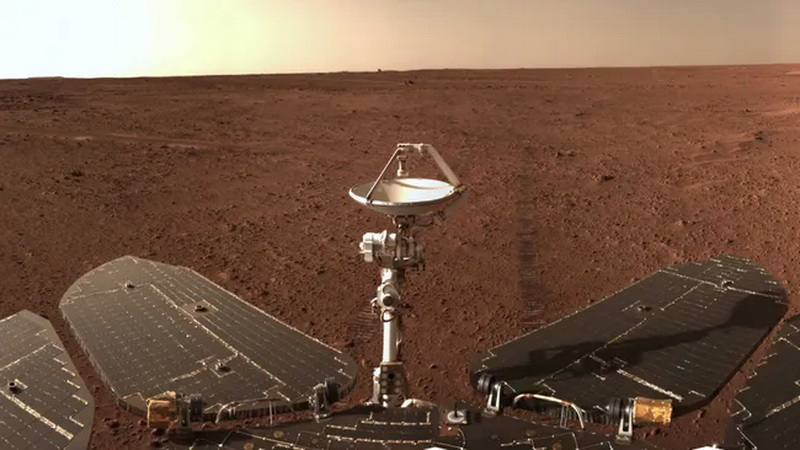China intends to be the first to deliver samples from Mars to Earth. The US and Europe are bogged down in developing a sample return mission, taking on a more complex task than the Chinese are planning to undertake. This gives China a chance to deliver samples from the Red Planet in 2031 – two to three years earlier than NASA and ESA. In particular, China has already tested a prototype of an orbital unit for capturing a container with Martian samples.

Chinese Mars rover “Zhuzhong”. Image source: CNSA
A group of Chinese scientists published an article in the latest issue of the journal *China Space Science and Technology*, in which they talked about testing a prototype module for capturing a container with samples. This is a small block weighing 12 kg, which will be on duty as part of the orbital module in the orbit of Mars, waiting for a container with samples from the surface of the planet to be delivered into space. The container will be small – the size of a large coffee can. The lander on the surface of Mars is expected to collect up to 500 grams of samples.
The size of the container and the volume of soil that it contains are limited by the permissible launch power of the returned rocket. The rocket cannot be too large and powerful, since it will have to overcome Martian gravity. In the process of approaching the orbital module, the container will somehow be sent in its direction, and the task of the capture module will be to capture the container in any orientation in space. The prototype, according to the developers, successfully coped with capturing the container in different orientations relative to the module.
After capture, the container will be transferred to the return vehicle, which will deliver it to Earth. China plans to start the mission in 2028, and its duration will be 3 years. Two rockets will be sent to Mars: one will carry the lander, return module and equipment for collecting samples at the landing site; the other is an orbital module with a capture unit and a reentry vehicle. Additionally, there is an option to collect samples far from the landing site using a helicopter and a small rover.
NASA and ESA’s Mars sample return mission involves collecting the tubes on the planet’s surface or transporting them by the Perseverance rover to a launch site for loading onto a rocket. A container the size of a basketball is provided for this purpose. The materials collected by the rover will be much richer than the Chinese samples, but the question of their successful delivery to Earth remains in question. The mission is behind schedule and its cost has increased significantly. NASA turned to private companies for help to save the program, but so far no clear answer has been received.